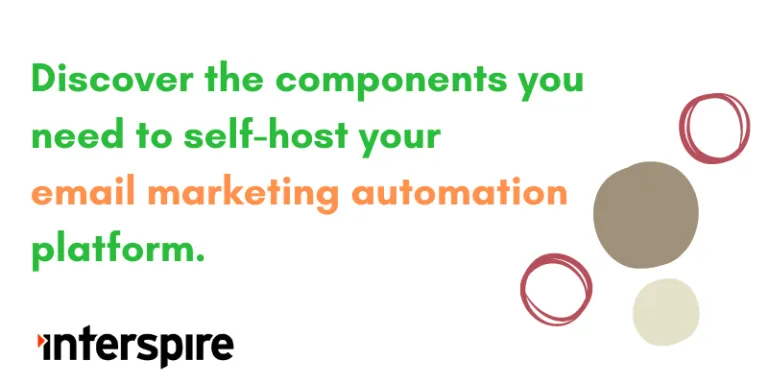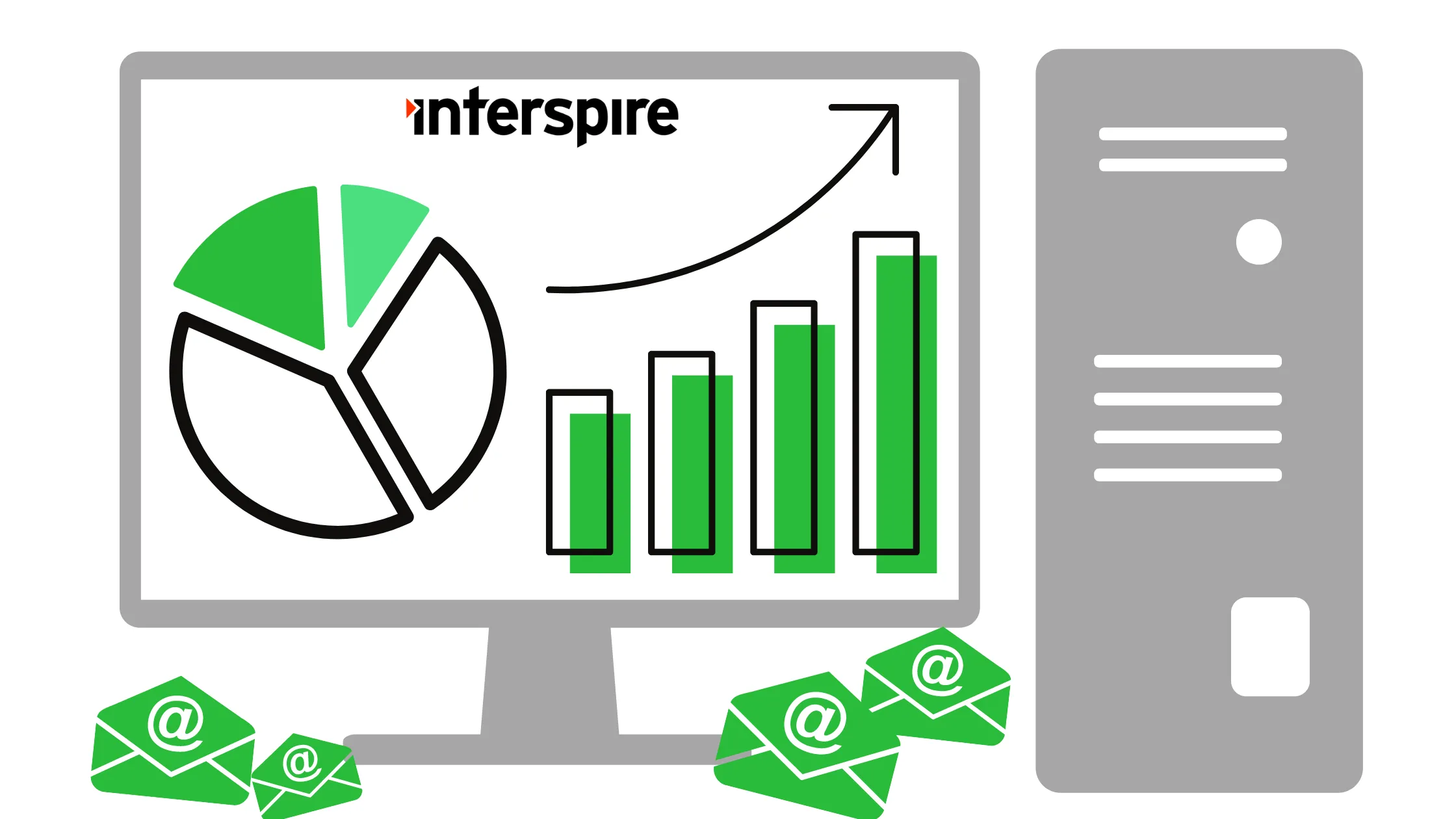If you have determined that a self-hosted solution might be a good fit for your needs, what are the components needed to successfully run a self-hosted marketing automation platform? The four main components are: the software, a server, an SMTP provider, and a mailbox to collect the bounces.
Self-hosting is not complicated. Let’s go over the components needed in more detail and explore some of the considerations when choosing from the various options that are available.
Explore the Series. Self-Hosted Email Marketing: A 4-Part Guide
1. SaaS or Self-Hosted Email Marketing?
2. What are the Components Needed to Self-Host an Email Marketing Automation?
3. How to Choose Virtual Private Server Hosting for Email.
4. Should You Use a 3rd-Party SMTP Provider for Email Marketing?
Software
The first component that you need is the software platform. You should evaluate the features that the software offers, the ease of setting it up and using its interface, the extent to which it can be customized, and its capacity to scale.
There are many self-hosted email marketing automation software in the market. Their capabilities range from the single purpose email sender to the very sophisticated offerings. Interspire is one of the top options sporting advanced features such as autoresponders, drip sequences, A/B testing, automated bounce processing, built-in reporting tools, and much more.
Interspire can be easily set-up and can help you create, manage, and send your campaigns effectively with its user-friendly interface and variety of features.
Not all self-hosted email marketing platforms include source code and allow complete customization, and Interspire is one of those that do.
Interspire’s design is also very scalable and can handle hundreds of thousands to millions of subscribers in its contact lists.
Server
The second component you need is a server to install the software on. There are three major types of servers: bare metal, shared hosting, and VPS. The type of server and the size you have to choose will depend on your target volumes and intent.
- Bare Metal Server provides private resources and a dedicated physical server to its users. This is the most expensive type of server as it offers exclusive access to the server resources. Bare metal is usually used by businesses or users that require accelerated performance for high volume often multi-tenant senders. Bare metal servers as offered by Hardware as a Service (HaaS) providers do give the heavy users the resources they need while offload data center style management and operations to those vendors. Bare metal may be excessive for users who require a server for less intense email sending. The main disadvantage bare metal offering are their costs and the additional architectural considerations should be taken for redundancy and back-ups for example.
- Shared Server Hosting is the most affordable option among the three. As its name implies, the resources of the server are shared among all of its users which can be in hundreds. The sharing nature of this server often results in unpredictable performance and a rather restrictive TOS to try to stop customers from over using or taxing the server resources. It could also lead to low email send, if at all.
- Virtual Private Server (VPS) is an affordable solution that provides the illusion of a dedicated or private server. It offers the flexibility of bare metal, and its resources are virtualized and often pre-allocated, while still being cost effective. A VPS is usually the recommended server type to use for the majority of self-hosted email marketing use cases.
Simple Mail Transfer Protocol (SMTP) Provider
SMTP is the protocol used to deliver emails. Every self-hosted installation will use SMTP to send the emails. Email transmission, receiving, and relaying are exclusively handled using SMTP. SMTP software could be installed on the same server running the automation software, or on one or more dedicated sender servers, or completely outsourced to a 3rd party SMTP provider.
- The SMTP communication can be provided by the local server using one of the well-known Message Transfer Agent (MTA) such as Postfix, QMail, or Exim, or the venerable Sendmail. This is setup is adequate for low-volume installations. For a variety of reasons, even for low volume sender, we recommend separating the sending function.
- For moderate to higher volume senders, distributing the sending functions to one or more dedicated sender servers is usually a better approach. This does increase the management burden as a more than one server now would need to be managed.
- Enter the 3rd party SMTP providers such as Mailgun, Inboxroad, Elastic Mail, Amazon SES, and others to whom the entire sending operations can be off loaded to at extremely reasonable costs. Sending email correctly in large quantity can be hard. Delivering emails is the bread and butter of those providers and we would recommend any substantial sender to leverage their services.
Inbound Mail Service For Bounce Processing
The last component that you need to successfully run a self-managed email marketing automation software is an inbound mail service to receive the inevitable email bounces. Bounces are emails that are returned to the sender because they could not be delivered to the intended recipient. It is important to collect the bounces and to process them. Bounce processing is critical to improve deliverability and maintain a good sender reputation. Interspire provides automatic bounce processing allowing you to keep your subscriber lists current.
Although we don’t recommend it, you can use the usual free email services such as Gmail, Hotmail, and others to receive the email bounces. If you decide to choose Gmail, take note that by default Gmail sends bounces or NDRs (Non-Delivery Report) to spam. You have to configure a filter to have them delivered to your inbox.
Another option is to use a paid mailbox provider. There are a number of reasonably priced ones catering to a variety of different users.
And of course the last option is use a self self hosted solution. It could as simple as using the locally included IMAP/POP services installed on your server using software like Dovecot. There are other more convenient self-hosted options such as iRedMail, Mailcow, Zimbra. They all are free self hosted email solutions and also have paid options if necessary.
Ending Thoughts
As outlined in our Hosted vs Download article -in which we went over the criteria to help you choose between a SaaS or a self-hosted solution- the benefits and flexibility of using a self-hosted solution can be very compelling. Self-hosting in general and self-hosting email marketing automation software in particular does not have to be a complex endeavor.
We have explored the four main components that are necessary to do so. They are the software, a server, an SMTP provider, and a mailbox. With some guidance, those four components can be acquired and provisioned quickly to get you sending your first email campaign in no time.
The next article in this series will explore in more details some of the server and VPS options that are available.

